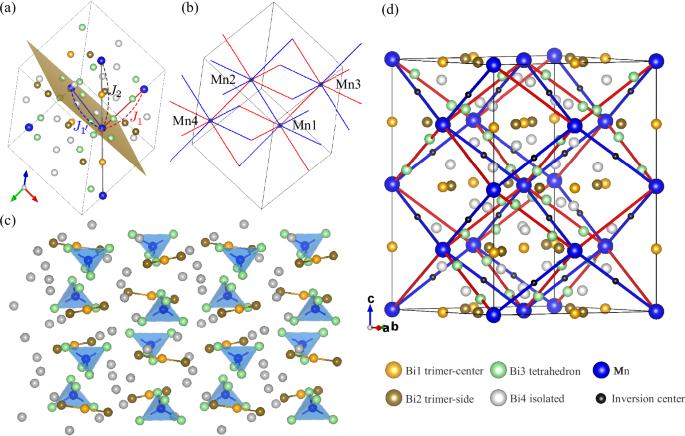The mysterious magnetic ground state of Ba14MnBi11 is likely self-doped and altermagnetic
引用次数: 0
Abstract
Magnetism in the Zintl compound Ba14MnBi11 is rather poorly understood. Experimental claims are largely inconsistent with ab initio calculations, much beyond typical errors of the latter. We revisit this old problem, assuming that the root of the problem may be in nonstoichiometry of existing samples. Our key finding is that the magnetic ground state is indeed very susceptible to charge doping (band filling). Calculations for stoichiometric Ba14MnBi11 give a rather stable ferromagnetic metallic state, in agreement with previous publications. However, by adding exactly one electron per Mn, the system becomes semiconducting as expected, and becomes weakly antiferromagnetic (AF). On the other hand, upon small amount of hole doping, the system transitions to a special type of AF state known as altermagnetism. Furthermore, hole and electron doping-induced phase transitions result from different underlying mechanisms, influencing different exchange pathways. We propose that the inconsistency between experiment and theory is not a failure of the latter, but results from a nontrivial ramification of nonstoichiometry. The possibility of doping-stabilized altermagnetism is exciting.

Ba14MnBi11 的神秘磁基态可能是自掺杂和变磁性的
人们对 Zintl 化合物 Ba14MnBi11 的磁性了解甚少。实验结果在很大程度上与 ab initio 计算结果不一致,远远超出了后者的典型误差。我们重新审视了这个老问题,假设问题的根源可能在于现有样品的非化学计量。我们的主要发现是,磁基态确实非常容易受到电荷掺杂(带填充)的影响。通过计算化学计量 Ba14MnBi11,可以得到相当稳定的铁磁金属态,这与之前发表的文章一致。然而,当每锰恰好加入一个电子时,该体系就会如预期的那样成为半导体,并变成弱反铁磁性(AF)。另一方面,当掺入少量空穴时,体系会过渡到一种特殊的反铁磁性(AF)状态,即所谓的 "变磁"(altermagnetism)。此外,空穴掺杂和电子掺杂诱导的相变产生于不同的基本机制,影响着不同的交换途径。我们提出,实验与理论之间的不一致并不是理论的失败,而是由于非化学计量学的非微不足道的衍生物造成的。掺杂稳定变磁性的可能性令人兴奋。
本文章由计算机程序翻译,如有差异,请以英文原文为准。
求助全文
约1分钟内获得全文
求助全文

 求助内容:
求助内容: 应助结果提醒方式:
应助结果提醒方式:


